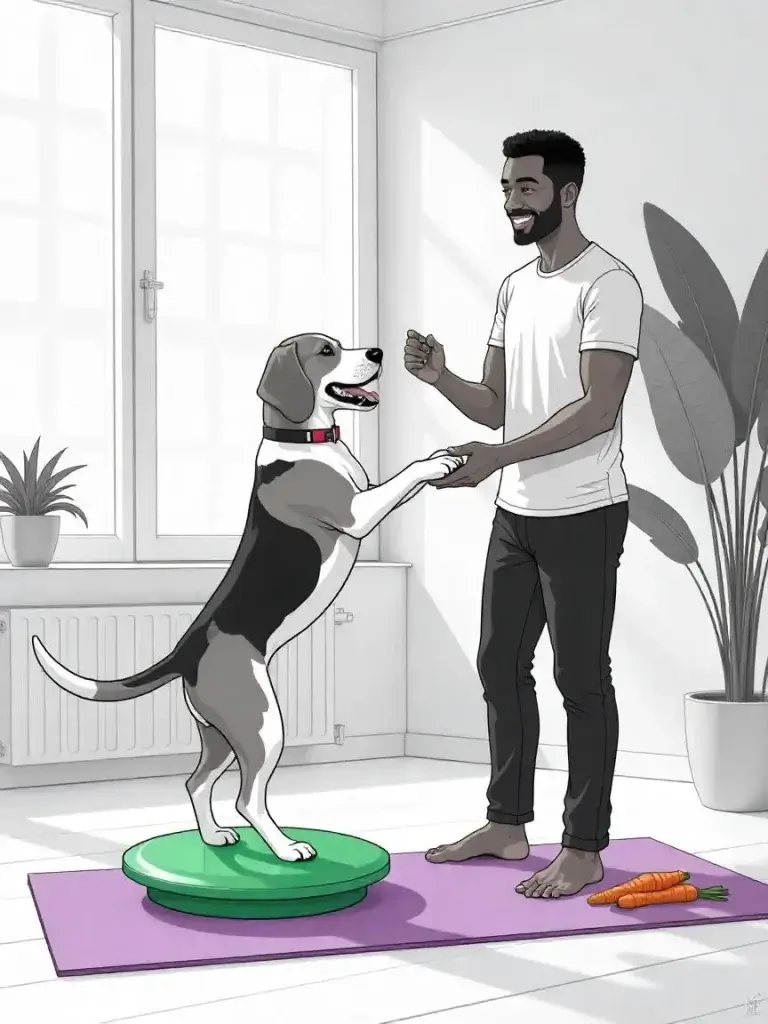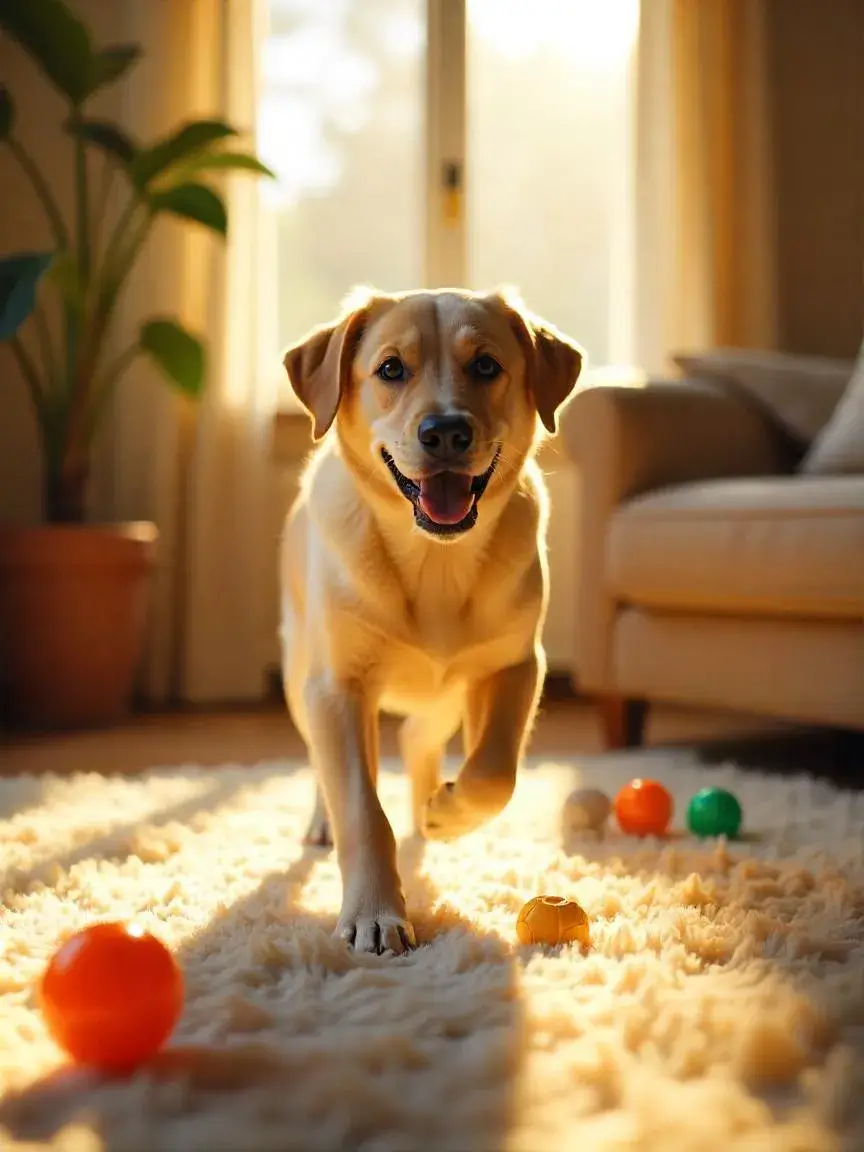Keeping your dog physically and mentally stimulated is essential for a happy, healthy pet. When outdoor walks aren’t possible—due to bad weather, limited space, or your own busy schedule—indoor exercise routines can save the day. This comprehensive guide (5,000+ words) explores creative, effective, and fun ways to exercise your dog indoors. You’ll learn physical workouts, mental stimulation techniques, safety precautions, scheduling tips, and strategies to create viral social media content.
Preparation
Assess Your Space
- Measure available area: Ensure there’s enough room for safe movement.
- Clear hazards: Remove fragile items, secure loose cables, and pad sharp corners.
- Floor surface: Use non-slip rugs or mats to prevent injuries on tile or hardwood floors.
Gather Essential Equipment
- Interactive toys: Treat-dispensing puzzles and snuffle mats.
- Tug ropes & soft toys: Safe options for tug-of-war.
- Mini agility gear: Indoor-friendly hurdles, tunnels, and cones.
- Balance tools: Stability discs or wobble boards for core workouts.
Prioritize Safety
- Veterinary clearance: Especially important for puppies, seniors, or dogs with health issues.
- Warm-up & cool-down: Start with light play and end with gentle stretches.
- Hydration: Keep fresh water accessible throughout sessions.
Physical Workouts

Aerobic Exercises
Indoor Fetch Variations
- Hallway fetch: Use a soft ball in a narrow corridor.
- Rebound toys: Toys that bounce unpredictably to keep your dog engaged.
Treadmill Training
- Slow intro: Begin at the lowest speed and reward calm behavior.
- Safety first: Always supervise and use a harness.
Strength Workouts
Stair Climbing
- Controlled reps: Guide your dog up and down a single step repeatedly.
- Weighted vest option: Only with vet approval for advanced dogs.
Tug-of-War
- Proper technique: Teach your dog a clear release cue (“drop it”).
- Muscle engagement: A great workout for jaw and forelimb strength.
Flexibility & Balance
Balance Disc Exercises
- Single paw stands: Encourage your dog to lift one paw on the disc.
- Weight shifts: Gentle side-to-side shifts for core activation.
Canine Stretching (Dog Yoga)
- Downward dog stretch: Assist your dog into a gentle back and leg stretch.
- Hip rotations: Help your dog rotate their hips while standing.
Mental & Behavioral Stimulation

Puzzle Games
- Muffin tin challenge: Hide treats under tennis balls in a muffin tray.
- Hide-and-seek: Hide treats or toys around the room for your dog to find.
Scent Work
- Scent trails: Lay down a trail of treats for your dog to follow.
- Scent detection boxes: Introduce different scents in separate containers.
Scheduling & Frequency
Tailoring to Your Dog
- Puppies: Short, frequent sessions (5–10 minutes, 3–4 times daily).
- Adult dogs: 2–3 sessions of 20–30 minutes.
- Senior dogs: Gentle activities, 10–15 minute sessions.
Mixing Modalities
- Alternate focuses: Aerobic one day, strength the next, mental play daily.
- Rest days: Include 1–2 rest days per week to avoid overtraining.
Special Considerations
Breed-Specific Tips
- High-energy breeds (e.g., Border Collies): 60+ minutes of intense activity.
- Toy breeds (e.g., Yorkshire Terriers): Focus on puzzle toys and mini agility.
- Seniors & brachycephalic breeds: Low intensity and careful monitoring.
Behavioral Challenges
- Separation anxiety: Use scent work and interactive feeders.
- Chewing & boredom: Increase mental tasks with complex puzzle toys.
Tracking & Assessment
Logging & Apps
- Exercise journal: Record type, duration, and intensity of each session.
- Dog fitness apps: Use apps or wearable trackers to monitor activity.
Health Monitoring
- Home check-ins: Monthly paw, joint, and mobility assessments.
- Vet visits: Schedule quarterly or biannual check-ups based on health.
Appendix & FAQs
Resources: Recommended toys, apps, and training guides.
FAQs:
- Will indoor exercise affect my dog’s sleep?
- How often should I incorporate strength training?
Conclusion
Indoor exercise can be fun, effective, and safe for all dogs. By combining physical workouts, mental challenges, and proper scheduling, you’ll keep your dog engaged, healthy, and happy—rain or shine. Try these expert tips, track your progress, and don’t forget to share your dog’s favorite indoor activity on social media with #IndoorDogChallenge!
Call to Action: Implement one new indoor exercise this week and share your experience in the comments below!


